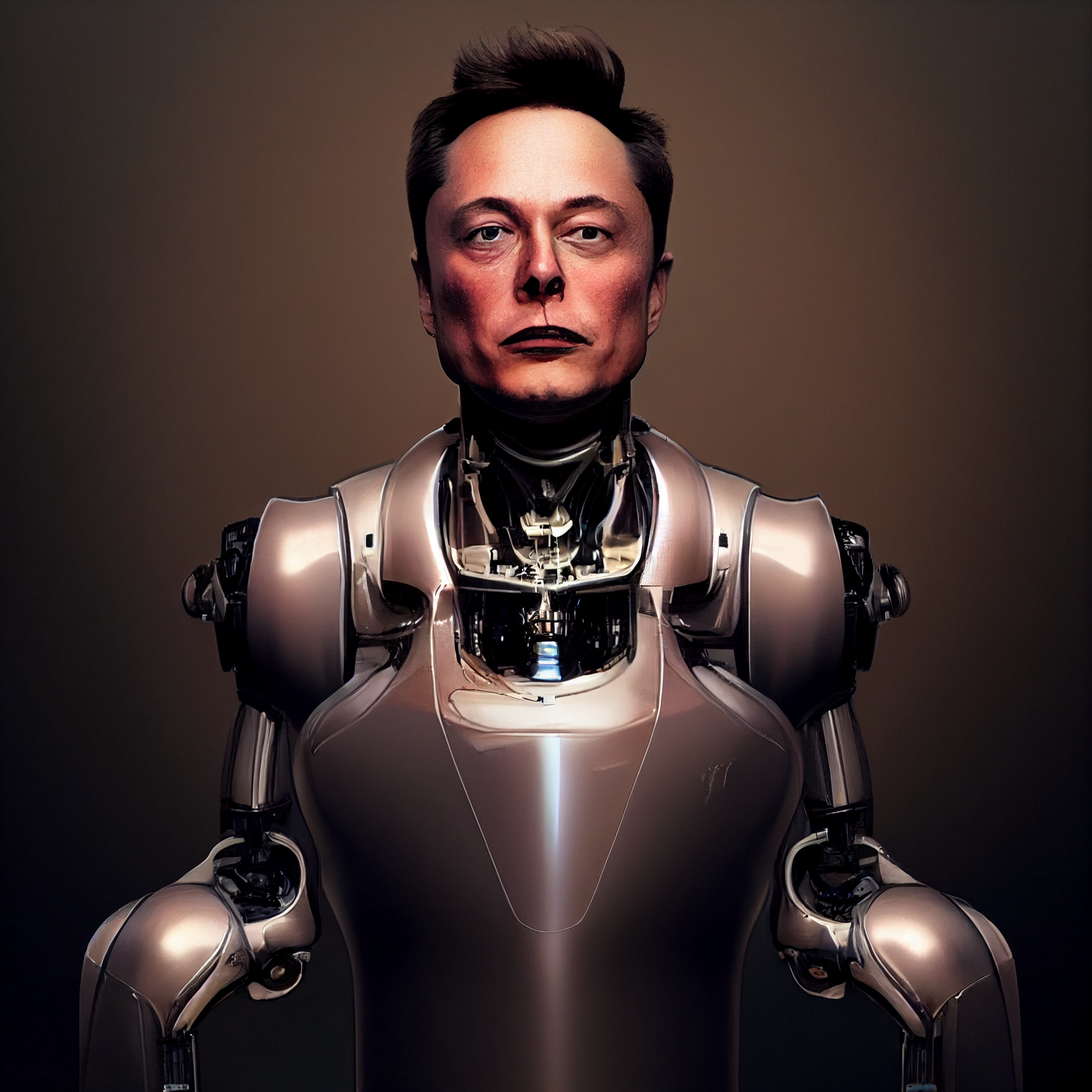In the world of career development, certain artifacts achieve a mythical status, generating endless debate and analysis. Few have been as potent or as polarizing as the "one-page resume" of Elon Musk. First created and circulated by the online resume-writing firm Novorésumé, this document was presented as definitive proof that if a man who builds rockets, revolutionizes electric vehicles, and aims to colonize Mars can fit his career onto a single sheet of paper, then no one else has an excuse for a multi-page curriculum vitae.1 The resume went viral, championed as a masterclass in the "Less, is More" philosophy that modern recruiters supposedly demand.1
This narrative, however, is built upon a central paradox. The document's perceived effectiveness is almost entirely predicated on the subject's global fame, a luxury unavailable to virtually any other job seeker on the planet.4 Elon Musk, as one career expert noted, "could put his name sloppily on a page and get hired".4
The resume is, therefore, not a model to be emulated but an anomaly to be deconstructed. Its success is a function of the name at the top, not the content below it.

This report moves beyond the superficial lesson of "simplicity and impact" 6 to conduct a forensic analysis of this viral artifact. It will serve as a case study to uncover far more valuable and nuanced truths about professional branding, strategic communication, and the complex realities of the modern hiring process.
This investigation will perform a critical autopsy of the document's profound flaws, explore the psychological and technological arena in which resumes must compete, and deliver a definitive verdict on the page-count debate.
Ultimately, this deconstruction will yield a strategic framework for building a truly effective modern resume—one that succeeds not because of who the applicant is, but because of the compelling, evidence-backed story it tells.
Section 1: A Critical Autopsy of the Musk Resume
To understand the lessons embedded within the Musk resume, one must first recognize it not as a genuine job application, but as a carefully constructed artifact with a specific purpose. Its analysis reveals a series of critical flaws that would be fatal for any professional without the shield of immense personal branding.
1.1 The "Proof-of-Concept" Premise: A Marketing Masterstroke
The document was never Elon Musk's personal resume hidden away in a file; it was explicitly created by the firm Novorésumé to prove a concept and showcase the capabilities of their templates.1 Their stated goal was to demonstrate that "even a highly successful career like his can be presented in a one page résumé".2 This was a deliberate and exceptionally successful marketing effort designed to go viral, and it did.3
This context is the foundation for any credible analysis. The document's primary purpose was marketing, not job acquisition. Several commentators have correctly identified that the resume was likely issued as an example, perhaps even "a joke so to say," purely to validate the one-page concept, and was never intended to be a perfect or factually precise representation of his career.4
This distinction is crucial, as it separates the resume's intended function from its perceived one, allowing for a critique of its utility as a practical tool for the average professional.
1.2 The Power of the Ultimate Halo Effect
The resume's most glaring weakness for any normal applicant is its professional summary. It reads: "Aiming to reduce global warming through sustainable energy production and consumption, and reducing the 'risk of human extinction' by 'making life multi-planetary' and setting up a human colony on Mars".4 For anyone other than Elon Musk, such a statement would sound "idealistic at best, crazy at worst" 4 or like "the construct of a child with a fervid imagination".5
A standard professional's summary must be grounded in tangible achievements, such as launching multi-billion-dollar companies or disrupting established technologies.4
The document's primary functional element is not its content but the name at the top. This name triggers an extreme version of the Halo Effect, a well-documented cognitive bias where a positive first impression in this case, recognizing the name "Elon Musk"—causes the reader to view all subsequent information more favorably.9
The global recognition of the name acts as a powerful anchor, pre-empting any critical evaluation of the document's actual content. The resume doesn't need to prove Musk's value; it merely needs to exist under his name. For any other professional, the resume's content must create the positive impression, not the other way around. Therefore, the document's success is a testament to the power of pre-existing personal branding, not the quality of the resume itself. It is a weaponized form of cognitive bias.
1.3 The Voids of Impact: Where Are the Accomplishments?
When stripped of the halo effect, the resume's content reveals significant voids where impactful information should be. These omissions violate the core principles of modern resume writing.
First, there is a complete absence of quantifiable metrics. A primary criticism from resume experts is the lack of any dollar figures or specific numbers that demonstrate success.4 A line such as "...conducted a successful viral marketing campaign, which led to a rapid increase in the number of customers" is vague and unconvincing.4
An effective resume must show impact with concrete data, such as revenue growth, cost savings, market share gains, or efficiency improvements.8 Without these numbers, claims of success are unsubstantiated.
Second, the work experience sections are dominated by responsibilities, not achievements.5 The description for Tesla, "Currently oversee the company’s product strategy – including the design, engineering and manufacturing of more and more affordable electric vehicles for mainstream consumers," is a job description.5 This is a cardinal sin in resume writing. Recruiters are less interested in what a candidate was tasked with doing and far more interested in what they actually accomplished in that role.15
Finally, the document includes outdated information that weakens its relevance. The resume prominently features a "Global Green 2006 product design award" in the Tesla section, an accolade that was a decade old at the time of the resume's creation.4 For a recruiter, this raises a red flag, suggesting a lack of significant, recent achievements. A resume should be a highlight reel of current and relevant impact, not a historical archive.
1.4 Technical and Typographical Red Flags
Beyond the strategic content flaws, the resume is riddled with basic technical and formatting errors that would cause a typical application to be immediately discarded.
Critics have pointed to elementary mistakes such as "orphans"—single words that fall on the last line of a paragraph, which makes a document look sloppy and unprofessional.4 Furthermore, lines that should be formatted as bullet points for readability are instead stacked on top of each other without spacing, a space-saving tactic that severely hinders scannability.4
The "Skills & Competencies" section is also grammatically inconsistent, mixing participial phrases ("Thinking through principles first"), adjectives ("Goal oriented"), and nouns ("Time Management") in the same list, which can confuse a reader.4
Most critically, the resume is fundamentally incompatible with the Applicant Tracking Systems (ATS) that large companies use to screen candidates. The stylized, graphic-based format of the skills section, with its rating bars, would be unreadable to an ATS.4 Since an estimated 75% of resumes are never reviewed by a human eye, being filtered out by these machine gatekeepers first, a document that cannot be correctly parsed is functionally useless for the vast majority of online job applications.13
To be ATS-compliant, the resume would require a complete reformatting into a simpler, text-based layout, which would inevitably make it longer and defeat the entire one-page premise.5
By choosing an extreme outlier like Musk, the creators of this resume produced a document that could only succeed by breaking all the established rules of effective resume writing.
The experiment inadvertently proves that for the 99.9% of professionals who are not globally recognized billionaires, content quality, quantification, and technical compatibility are far more important than adhering to an arbitrary page-count rule. The document is a successful piece of marketing but a failed pedagogical tool.
Section 2: The Recruiter's Mind: The Psychological Arena of the 7-Second Scan
A resume does not exist in a vacuum. It is a communication tool designed to perform under extreme pressure in a highly competitive environment. To fully grasp the inadequacy of the Musk resume as a template, one must understand the psychological and technological context of the modern screening process.
2.1 The 7.4-Second Gauntlet: The Science of the Skim
Recruiters do not read resumes; they scan them. A widely cited study by the job-search firm Ladders, Inc. found that recruiters spend an average of just 7.4 seconds on their initial scan of a resume.9 Other sources place this figure between six and eight seconds.17 This is not a comprehensive reading process; it is a rapid, subconscious pattern-recognition exercise aimed at answering one question: "Is this person worth a closer look?".18
Eye-tracking studies reveal that this scan follows predictable paths. Recruiters' eyes often move in an "F-pattern"—reading across the top, then moving down the left side of the page to scan for keywords and job titles, with another shorter horizontal scan partway down.9
Another common path is the "Z-pattern," moving across the top, diagonally down to the bottom left, and across the bottom.9 During this fleeting moment, they are looking for specific, high-value data points: Name, Current and Previous Job Titles, Company Names, Employment Dates, and Education.9
This reality exposes the Musk resume's flaws in an even harsher light. For a normal candidate, the lack of clear, bulleted, quantified achievements means a recruiter's skimming eye would find nothing of substance to latch onto. There are no bolded metrics or powerful action verbs to catch their attention. The document relies entirely on the recruiter recognizing the name and stopping, a luxury no one else has.
To survive this initial filter, a resume must be strategically structured to feed the recruiter the most valuable information as quickly as possible. The following table illustrates the types of information that are immediately impactful versus those that are ignored during the initial scan.
2.2 The First Gatekeeper: Man vs. Machine
Before a resume ever faces the 7-second human scan, it must first pass through a machine. The modern hiring process for most medium-to-large companies begins with an Applicant Tracking System (ATS).13 This software is the first gatekeeper, designed to parse resumes, extract key information, and rank candidates based on their match to the job description.17
To succeed, a resume must be built for this dual audience: first the machine, then the human. This creates a fundamental design tension. For the machine, the resume must be highly functional. This means using a simple, single-column layout, standard sans-serif fonts like Calibri or Arial, and standard section headings like "Work Experience" and "Education".19 It must be rich in the specific keywords and phrases found in the job description. Any element that can confuse the parsing software—such as columns, tables, graphics, images, or unconventional fonts—risks causing the resume to be misread or rejected outright.4
Once past the ATS, the resume must then appeal to the human recruiter. Here, scannability and visual organization are paramount. The document must use white space, bolding, and clear bullet points to guide the recruiter's eye to the most impactful information.10 The Musk resume, with its graphical skills chart and unconventional formatting, is designed solely for a human audience that is already impressed. It would fail the machine test completely.
A beautiful resume that is never seen by a human is a worthless document. The critical lesson for every professional is that aesthetic appeal cannot come at the expense of technical functionality.
Section 3: The Page-Count Fallacy: Re-evaluating Resume Length in the Digital Age
The very premise of the Musk resume—that one page is the universal gold standard—is the most persistent and misleading myth in career advice. The debate over resume length has raged for years, but a modern, evidence-based consensus has emerged: relevance and impact trump arbitrary rules. The ideal length is not a fixed number, but a strategic choice based on a professional's specific career stage and industry.
3.1 The Strategic Case for Brevity (The One-Page Resume)
A one-page resume is not inherently superior, but it is a powerful tool when used in the right context. Its primary strength lies in its ability to force clarity, focus, and discipline.22 By stripping away non-essential information, a single page can deliver a concise, high-impact snapshot of a candidate's value proposition, making it incredibly easy for hiring managers to navigate and find what they need at a glance.25
This format is most effective for specific professional profiles:
- Students, Recent Graduates, and Early-Career Professionals: For those with less than roughly eight years of professional experience, a single page is typically sufficient to showcase their education, internships, and key accomplishments without resorting to filler.22
- Career Changers: When a professional is transitioning to a new industry, much of their previous experience may be irrelevant. A one-page resume allows them to focus on a powerful summary and a curated list of transferable skills and achievements, rather than detailing a long and unrelated work history.25
- Professionals in Certain Industries: Fields like technology startups, marketing, and creative design often value brevity and directness, making a concise one-page format a cultural fit.27
3.2 The Strategic Case for Depth (The Two-Page Resume)
The rigid "one-page rule" is increasingly viewed by recruiters and career experts as an outdated relic of a time when resumes were printed and physically handled.25 In the digital age of scrolling PDFs, the stigma against a second page has largely vanished, provided the content justifies the length. Forcing a long and distinguished career onto a single page is a strategic error; it often requires cutting crucial details, omitting key achievements, and ultimately weakening the application.26
A two-page resume is not just acceptable but often necessary and preferable for these profiles:
- Mid-Career and Senior-Level Professionals: An individual with 10, 15, or more years of relevant experience simply needs more space to tell a compelling story of career progression, leadership, and sustained impact.4 A second page allows for the detailed, quantified achievements that senior roles demand.
- Professionals in Complex or Technical Fields: Those in academia, research, engineering, or senior management often have extensive lists of projects, publications, patents, or complex accomplishments that cannot be adequately summarized in a single page.5 Trying to do so would rob the resume of its most powerful evidence.
- Optimizing for Applicant Tracking Systems (ATS): Some experts argue that a two-page resume can be advantageous for ATS, as the additional space allows for the inclusion of more relevant keywords and phrases from the job description, potentially increasing the document's match score.25
3.3 The Modern Verdict: Relevance Over Rules
The debate over one versus two pages is a false dichotomy. The true determinant of a resume's effectiveness is the quality and relevance of its content, not its length.26 The goal is to craft a compelling narrative of professional value. The resume should be precisely as long as it needs to be to tell that story powerfully and no longer. The error lies at the extremes: trying to stretch two years of experience onto two pages is as detrimental as trying to cram twenty years of achievements onto one.4
To move beyond simplistic rules and provide a practical guide, the following decision matrix offers a framework for professionals to choose the appropriate resume length for their specific situation.
Section 4: Forging a High-Impact Narrative: A Strategic Framework for the Modern Resume
Critiquing the Musk resume is instructive, but the ultimate goal is constructive. By synthesizing the lessons from its failures with established best practices, it is possible to forge a framework for a modern resume that is both technically functional and narratively compelling. This framework is built on five core principles.
4.1 Principle 1: The Strategic Summary (The First 15 Words)
The top of the resume is the most valuable real estate. Outdated "Objective" statements, which focus on the applicant's desires, should be replaced with a powerful "Professional Summary" that focuses on the employer's needs.19 This section is a 2-3 line elevator pitch that immediately answers the recruiter's core question: "Is this person a relevant fit for this specific job?".14
A strong summary is not generic; it is tailored for each application. It should lead with a strong descriptor or job title that mirrors the target role—even if it's an aspirational one—and immediately highlight the most relevant qualifications and years of experience.16
For example:
"Data-driven Marketing Executive with 12 years of experience leading high-growth SaaS companies. Proven expertise in demand generation, marketing automation, and building top-performing teams." This immediately tells the recruiter who the candidate is, what they do, and why they are qualified, all within the first few seconds of the scan.
4.2 Principle 2: The Architecture of Scannability
Given that recruiters scan rather than read, the resume's visual structure is paramount. The design must facilitate rapid information intake. This is achieved through a clean, modern format with ample white space to avoid a cluttered appearance.10
Formatting best practices include:
- Font: Choose a clean, easy-to-read sans-serif font like Calibri, Arial, or Helvetica in a size between 11 and 12 points.19 Times New Roman can appear dated.
- Consistency: Use formatting elements like bolding and italics consistently to guide the reader's eye. For instance, bold all job titles and company names so they stand out during a quick scan.12
- Bullet Points: All descriptions of work experience should be in bullet points, not paragraphs. Each point should be concise and, ideally, fit on a single line. Limiting each role to 3-5 powerful bullet points maximizes readability and impact.20 This is the direct antidote to the unbulleted, stacked text that made the Musk resume difficult to read.
4.3 Principle 3: The Currency of Quantification (From Responsibility to Impact)
The single most powerful transformation a professional can make to their resume is to shift from listing responsibilities to showcasing quantified achievements.8 A responsibility describes what you were supposed to do; an achievement proves what you actually delivered. Every bullet point should, whenever possible, include a metric—a number, percentage, or dollar amount—that provides concrete evidence of your impact.
The STAR method (Situation, Task, Action, Result) is a useful mental model for crafting these points, with a laser focus on the "Result".23 The goal is to answer the recruiter's silent question of "So what?" for every claim made. The following table provides concrete examples of this transformation.
4.4 Principle 4: The Language of Relevance (Tailoring for Man and Machine)
A generic, one-size-fits-all resume is a weak resume. In the modern hiring landscape, tailoring is not optional; it is essential.13 Each application requires a dedicated version of the resume that is meticulously aligned with the specific job description.
This practice serves two critical functions. First, it ensures the resume is optimized for the ATS by incorporating the exact keywords, skills, and terminology the system is programmed to look for.17 If the job description asks for "experience with Salesforce CRM," the resume must contain that exact phrase. Second, it signals to the human recruiter that the candidate has done their research and is a direct, thoughtful fit for the role, rather than someone indiscriminately blasting out applications. This simple act of customization dramatically increases the chances of being perceived as a top-tier candidate.
4.5 Principle 5: The Cohesive Career Story
Finally, a great resume transcends a simple list of jobs. It tells a logical and compelling story of growth, learning, and progression.15 It should connect the dots between past experiences and future aspirations, showing the recruiter not just what the candidate has done, but where they are capable of going. This narrative coherence is what separates a mere chronology from a compelling career trajectory.
Even potentially negative elements, like employment gaps, can be framed as part of this journey. Being prepared to honestly and proactively explain a gap—whether for family care, further education, or travel—demonstrates self-awareness and integrity.15 The goal is to present a cohesive narrative that makes the candidate's next desired step feel like the logical and inevitable conclusion to their story so far.
Conclusion: Beyond the Document: The Resume as a Strategic Note in a Career Symphony
The viral one-page resume of Elon Musk stands as a fascinating case study—a powerful piece of marketing and a testament to the immense gravity of personal branding. However, as a practical template for professional success, it is deeply and fundamentally flawed. Its value lies not in imitation, but in the critical questions it forces us to ask about what truly makes a resume effective in the 21st century.
The deconstruction of this artifact reveals a series of core truths.
First, a resume's power is not determined by its length, but by its precision—its ability to deliver a clear, compelling message in the face of the 7-second scan.
Second, its currency is not in listing responsibilities, but in demonstrating quantifiable impact with hard evidence and metrics.
Third, its success hinges on its strategic alignment with a specific audience, an audience that is now composed of both machine algorithms and human recruiters. A document that fails to speak the language of both is destined for the digital void.
The ultimate lesson from the Musk paradox is that the resume, no matter how perfectly crafted, is just one component of a modern job search. It is a strategic document, a vital note in a much larger career symphony. Its effectiveness is magnified when it works in concert with a strong, keyword-optimized online presence on platforms like LinkedIn, a proactive networking strategy, and polished interview skills.13
The goal is not merely to write a great resume, but to build a multifaceted professional brand that communicates value at every touchpoint. The one-page resume is a compelling myth; the real solution is a comprehensive, strategic, and evidence-based narrative of professional worth.





